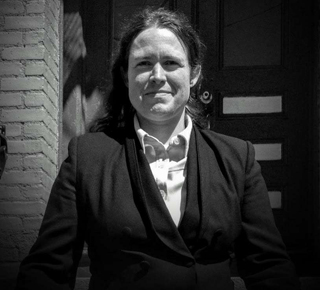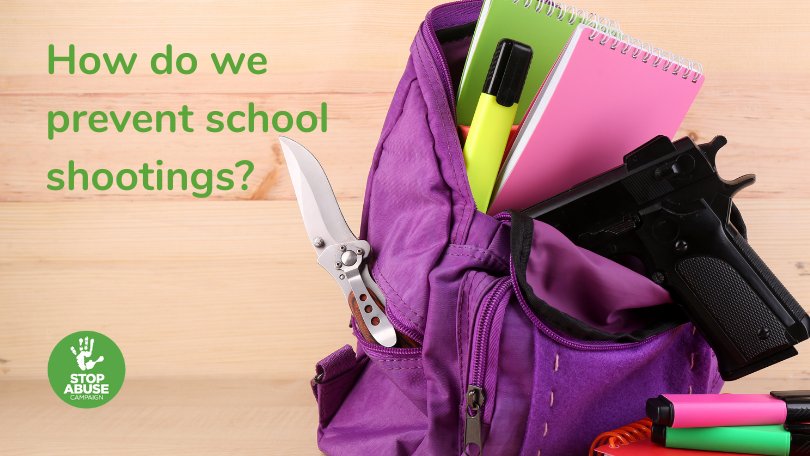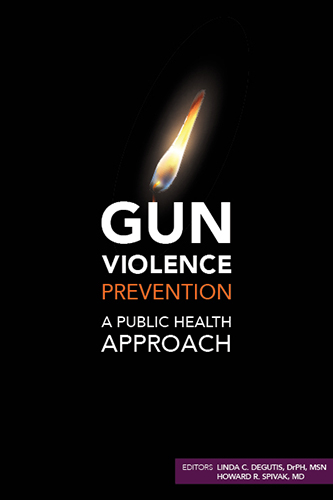Today, most of us are sitting with a grief that is alternatively causing us to rage, weep, dread, and surrender to negativity. A gunman killed 19 children and two adults in a massacre inside a fourth-grade classroom at the most recent count. This event is coming on the heels of a racially-motivated mass shooting in Buffalo, NY, and Laguna Woods, CA. Everyone talks about doing “something”; what precisely to do breaks down along political lines that rarely yield fruitful results.
What do the experts know about school shootings, gun violence, and children?
Gun violence is a public health problem, but it’s not all about school shootings.
In 2020 (the most recent year for which statistics are available), more children died from gunshots than traffic crashes, previously the biggest killer. This has happened both because the rate of gun violence has increased and the rate of car accident fatalities has decreased (one good piece of news in this very bleak picture).
It is essential to realize that school shootings make up a tiny percentage of youth firearms deaths. Between 2018 and today, 60 children have died in school shootings. Those numbers are likely a little lower than average because they include 2020, in which most children spent little time physically in school, and we are less than halfway through 2022. But they echo what experts have been saying for years; that most youth deaths related to firearms happen in different contexts.
What are the more common means of youth firearm death?
The total number of youths (in this case, “youth” is defined as ages 1-17; some data sets broaden this to 0-19) who die from firearm-related deaths in the average year is 1839. Of these youth, roughly half die from homicide (992). This would include all children who die in school shootings, children who die in youth-to-youth conflict, gang-related conflict, and the small percentage of child abuse fatalities that involve a firearm. Of the remaining 847 youth, 693 die from suicide, 99 die from unintentional shootings, 10 from law enforcement intervention, and the rest are “motive unknown.”
It is also worth understanding that child abuse kills as many children as fIrearm violence. For many reasons, journalists and reporters are not always aware that a child’s death is due to child abuse, especially when an investigation of the manner of death is still underway.
What do we know about perpetrators of gun violence?
We know that ACEs and childhood trauma are strongly linked to many forms of adult violence. We know that most school shooters have had abusive and traumatic childhoods. Since the infamous Columbine school shooting, the media has talked extensively about the impact of being bullied on school shooters. Being a bully or a bullying victim is strongly linked to experiencing ACEs. Nearly 38% of youth gun violence victims die from suicide, strongly linked to ACE scores.
We know that Salvador Ramos had a difficult childhood. He lived with his grandmother after a significant fight with his mother. His grandfather was involved in the criminal justice system. His mother’s drug use seems “common knowledge” around town and within the family.
What about mental health care?
While the perpetrators of school shootings have exhibited what might be mental health problems (which often are undiagnosed or treated), in general, people who have mental health illnesses are more likely to be victims of violence than to inflict violence.
There is no doubt that we would lessen many of our society’s problems with improved mental health care. Unfortunately, politicians bandy this phrase as though “improving mental health care” is a finite task that we can quickly check off a to-do list.
In light of a mass shooting, I have never heard a concrete or comprehensive plan for fixing “mental health care” to the point that it would effectively prevent mass shootings. Indeed, it’s impossible to know what would need to happen for our mental health care system to improve quickly, but here are some specific issues we need to address.
Quantity: There are not enough licensed social workers, psychologists, and psychiatrists to meet the demand. New patients can face significant wait times and unhealthy limits on how many times they can see a therapist.
Quality: Let’s say you find a therapist and you like them. But they say they’re going to use Cognitive Behavioral Therapy, and you don’t feel it’s helping you. But your therapist says this is the only modality of therapy that they’re comfortable using on you, and it’s the only thing your insurance will cover. Or, you meet a therapist and get diagnosed, and the therapist says they’re not comfortable treating someone with your diagnosis, and there’s no one else in town who is.
Affordability: Nearly 10% of Americans don’t have health insurance, and different states have different laws about how much mental health care insurance companies must reimburse, making mental health care unaffordable.
Risk Assessment: Payton Gendron, the 18-year-old who committed a racially-based mass shooting in Buffalo, was hospitalized for a day after he said, truthfully, that he wanted to commit mass homicide after graduating. Yet, he talked his way out of the psychiatric hold and avoided triggering a system that would have prohibited him from buying guns. Salvador Ramos had never been diagnosed with a mental health condition but admitted to cutting his face with knives “for fun.” They both needed more contact with the mental health system than they received, even though neither sought it out. This isn’t easy to do with our current laws, but we need to improve them.
Mandatory Reporter Laws: Mental health care providers must report suspected child abuse to the authorities. A young person who fears interaction with the authorities, which most abused children do, is likely not to discuss abuse issues with their therapist, thereby painting a misleading picture of their life and not finding true healing.
Preventing Adverse Childhood Experiences: Research links ACEs to gun violence of all forms and many other problems. But discussion of ACE prevention is rare. The Maternal Home Visiting programs that prevent ACEs are woefully underfunded and only available to a small percentage of qualifying families. There are significant gaps in our knowledge of what else we can do to prevent them. Expanding existing ACE prevention programs and research into new ones is one of the best ways to spend money as a society.
What about guns?
– Public health experts largely agree that limiting access to the most deadly guns, and limiting the most dangerous people’s access to all guns, are essential steps. Specific steps include, widely recommended by experts, include:
– Banning high-capacity magazines and assault weapons
Keep perpetrators of domestic violence and people with significant mental illness from owning weapons, and allow for people who experience sudden behavior changes to have their guns temporarily removed after due process.
– Mandate safe storage for firearms.
– Mandate training and licensing for firearms.
– Strengthen the federal background check law. While federal law requires background checks for all gun sales by licensed gun dealers, it does not require background checks for guns sold by unlicensed sellers, like non-dealers who sell guns online or at gun shows. This loophole enables people with felony convictions, domestic abuse restraining orders, and other people with prohibiting histories from buying guns with no questions asked.
What can I do?
Use accurate numbers: School shootings are awful enough without people thinking they’re more common than they are, and exaggeration will only promote fear and bad public policy that ignores big chunks of the problem.
Exhort your legislators at the state and federal level: take a public health approach to gun violence.
Have brave conversations: Talk about ACEs, mental health, and gun safety. We need action on all of these fronts to protect children truly. We need to keep people safe, given that there are guns in our environment, much as we have worked to do with motor vehicles.
Support ACE prevention: Click here to learn more about how we can help parents break the cycle of abuse.
Suggested reading:
Gun Violence Prevention: A Public Health Approach
Gun Violence Prevention: A Public Health Approach acknowledges that guns are a part of the environment and culture. This book focuses on how to make society safer, not how to eliminate guns. Available on Amazon from $39.
Do you know your score?
Discover your ACE score and unlock a new understanding of your life. Take the test and gain insights into how your early experiences shape your well-being. Don't let your past define you – empower yourself with knowledge.

Melanie Blow
Executive Director, Stop Abuse Campaign
A survivor of incest, psychological abuse and a host of other childhood trauma, Melanie now uses her talents to prevent Adverse Childhood Experiences. Melanie has over a decade of legislative advocacy regarding children’s issues, and she has been published in newspapers, magazines and blogs all across the country.
Melanie has an ACE score of 6.

